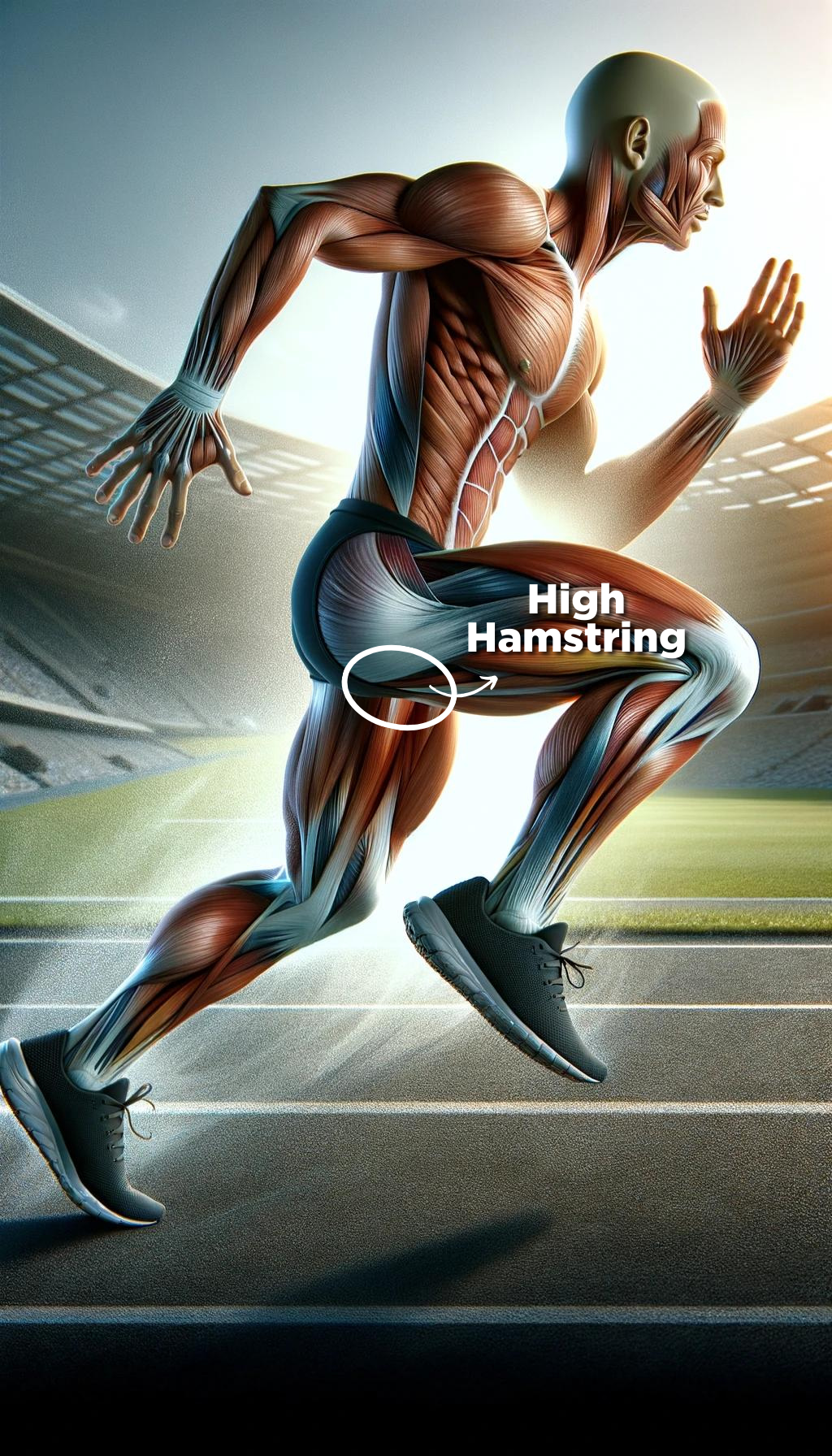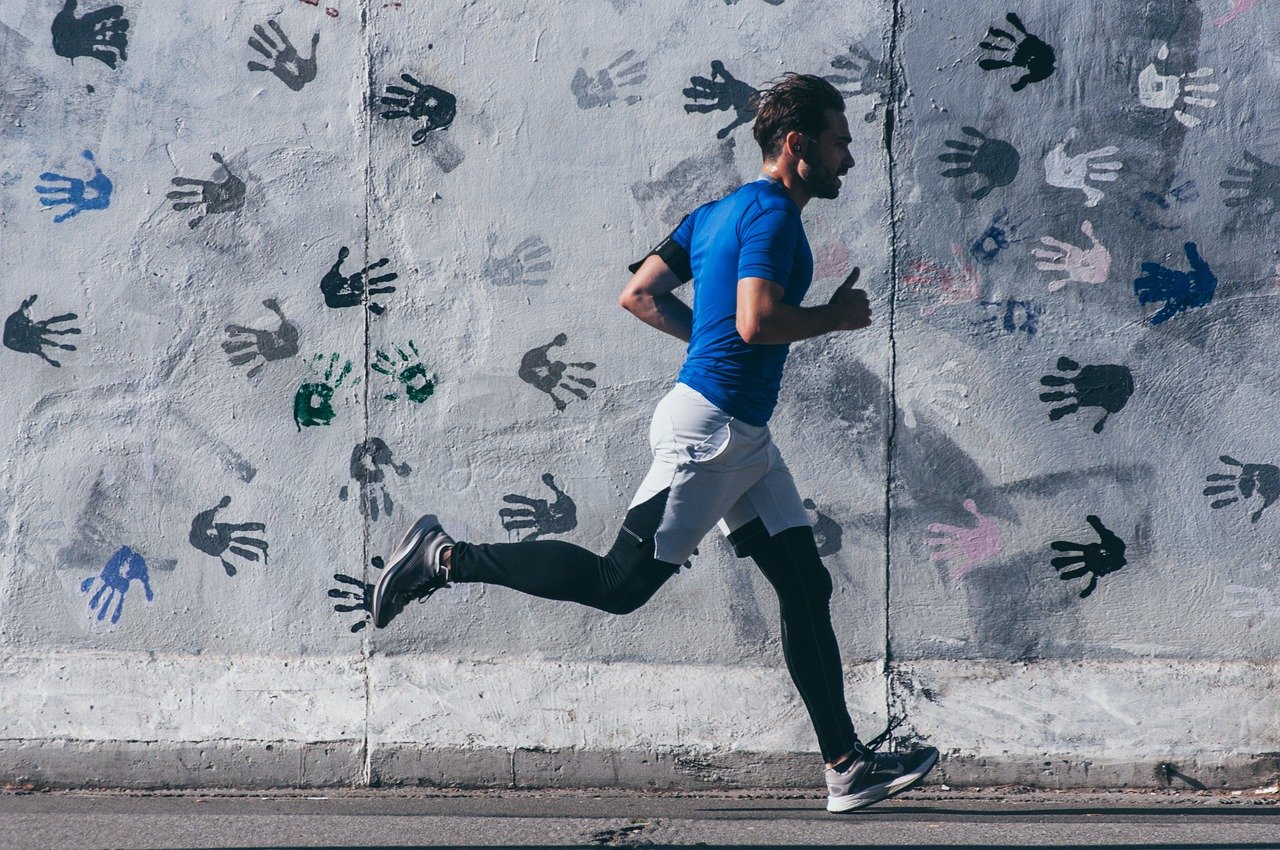Overstriding is often a culprit for hamstring injuries in runners, but can be corrected.
Strengthening your hamstrings should include the single-leg Romanian Deadlift (RDL).
Picture this: You're midway through your morning run, the rhythm of your feet hitting the pavement syncing with the beat of your heart. Suddenly, you feel a sharp pain behind your thigh, halting you, mid-stride.
Maybe it's not the first time your hamstring has screamed for attention, but it begs the question – could your running form be the very thing that's putting you on the sidelines?
you on the sidelines?
After all, who taught you how to run?
If you’re like many of our running clients, your response might be, “Well…I did.”
Today, we're zeroing in on overstriding, a common yet often overlooked running form problem that could be the root cause of your hamstring woes.
Overstriding occurs when your foot lands well ahead of your body's center of gravity. This is most common in our runners who land with a heel strike. Instead of a smooth, efficient run, each step becomes a mini collision, sending shockwaves up the chain and through your body.
Not only does overstriding slow you down, it puts excessive strain on your hamstrings. Why? Because when you overstride, your hamstrings are forced to work overtime. They act as brakes, decelerating your body with each step. Over time, this repetitive strain can lead to microstress and, eventually, hamstring strains- especially high hamstring strains.

Now, in case you’re wondering what a high hamstring strain is, it presents as pain at the sit bones where the hamstrings originate (see image).
Activities like sitting and driving are often very painful as well as running (hill climbs in particular).
If this sounds like you, and you have been struggling to run because of a high or mid hamstring strain, get it checked out during our free Runners’ Hamstring Pain Assessment by clicking here.
You might wonder how something as innate as your running stride could lead to injury. The answer lies in the subtlety of the habit. Overstriding doesn't happen overnight; it's often the result of running with a heel strike over time, which is how most runners land and inefficient running mechanics. As you push for speed and longer distances, the stress on your hamstrings also increases.
Recognizing overstriding is the first step towards correction, which is why we offer a free running form assessment at our Cary location.
Here are a few signs you might be overstriding:
 - Your foot lands, heel first, well in front of your knee.
- Your foot lands, heel first, well in front of your knee.
- You stomp the ground with each step.
- You experience frequent hamstring soreness or injuries.
If any of these signs sound familiar, don't fret. The path to a healthier stride is well within reach. Here are actionable steps to correct overstriding and protect your hamstrings:
3 Ways to Overcome Overstriding:
-
 Shorten Your Stride: Aim for your foot to land directly under your body, not in front of it. This might feel awkward at first, but it's crucial for reducing the strain on your hamstrings.
Shorten Your Stride: Aim for your foot to land directly under your body, not in front of it. This might feel awkward at first, but it's crucial for reducing the strain on your hamstrings.
- Increase Your Cadence: Aim for a higher step rate regardless of speed (use any metronome app and aim for 170-180 steps per minute). This naturally shortens your stride and helps your feet land under your center of gravity.
- Seek Professional Advice: A physical therapist specializing in running can offer a personalized running form analysis and prescription of running drills and exercises tailored to your unique biomechanics.
How to Optimize Your Hamstrings:
As far as strengthening the hamstring, a key exercise that we have runners do in our MEI Method is the single-leg Romanian deadlift. Don't let the name intimidate you; this move is your ticket to stronger, more resilient hamstrings.
Here's why the SL RDL should be a cornerstone in your running fitness routine:
Coordination and Kinesthetic Awareness:
SL RDLs don't just pump up your hamstrings; they offer comprehensive development of single leg balance, strength, and coordination.
Injury Resilience – The New Prevention:
While injury prevention is a myth due to life's unpredictable nature, injury resistance and resilience after an injury are the desired goals. The SL RDL's emphasis on the eccentric contraction of the hamstring mirrors the demands of the running cycle, fortifying the muscle fibers against the unexpected. This can help your hamstrings not only become resistant to injuries but also primed to recover swiftly should they occur.
Counteracting Imbalances for Balanced Strength:
Asymmetries in strength and flexibility are the silent saboteurs of well-being. By isolating each leg, SL RDLs expose these discrepancies, allowing you to address them head-on. This balanced development is your shield against the lopsided strains that often lead to chronic conditions and acute injuries, such as the dreaded high hamstring tendinopathy.
How to Execute the Single-Leg Romanian Deadlift (RDL) with Precision:
- Begin upright with feet parallel and hip-distance apart.
- Transition your weight to one leg, maintaining a natural bend at the knee.
- Hinge at the hips, while keeping your back straight, as you lean your torso forward.
- Elevate the opposite leg, creating a line stretching from your head to your heel.
- Lower until your hamstring signals a stretch, then return to your standing heel as you rise.
- Perform the sequence for your prescribed reps before you honor the other leg with the same intensity (Generally, 3-6 sets of 8-15 reps depending on what your coach or physio recommends).
Master the Technique with These Tips:
- Spine Alignment: Keep your spine neutrally aligned, from the base of your head to your tailbone.
- “Heavy on the Heels”: Shift your bodyweight towards the heels as you hinge.
- Shin Positioning: Aim to keep your shin relatively vertical to enhance hamstring engagement.
- Descent Control: Lower with poise to maximize muscle activation.
- Weight Path: Let the weight skim close to your shin, anchoring the movement.
Disclaimer: Always collaborate with a physiotherapy running specialist before trying out new exercises, especially if hamstrings are currently a concern!
Final Thoughts
By correcting overstriding and strengthening your hamstrings the right way, you're taking a crucial step towards a healthier, happier running experience.
Struggling with persistent hamstring pain or overstriding despite all efforts?
Don't let frustration be your finish line. Click here to reserve your complimentary Running Form and Hamstring Pain Assessment at our Cary location and stride into a pain-free future!
—
 Dr. Jerry Yoo is the Founder of Next Level Physio.
Dr. Jerry Yoo is the Founder of Next Level Physio.
He has worked with elite and professional athletes, runners, and triathletes for over 25 years. As a clinical running research partner with Rutgers University, Dr. Jerry specializes in helping runners and lifelong athletes over 40 get back to what they love to do.
Latest News
Upcoming Events
R&D Brewing Run Club
6:00pm - 7:00pm
Come run with us every Tuesday at 6pm at R&D Brewing off of Capital Blvd.
Learn More ›Raleigh Brewing Run Club
6:30pm - 8:00pm | Raleigh Brewing Company, 3709 Neil St, Raleigh, NC 27607
Join us every Wednesday at Raleigh Brewing Company (Neil St. location) for 3-4 miles, then s…
Learn More ›
Connect With Us
see the latest from Fleet Feet Raleigh